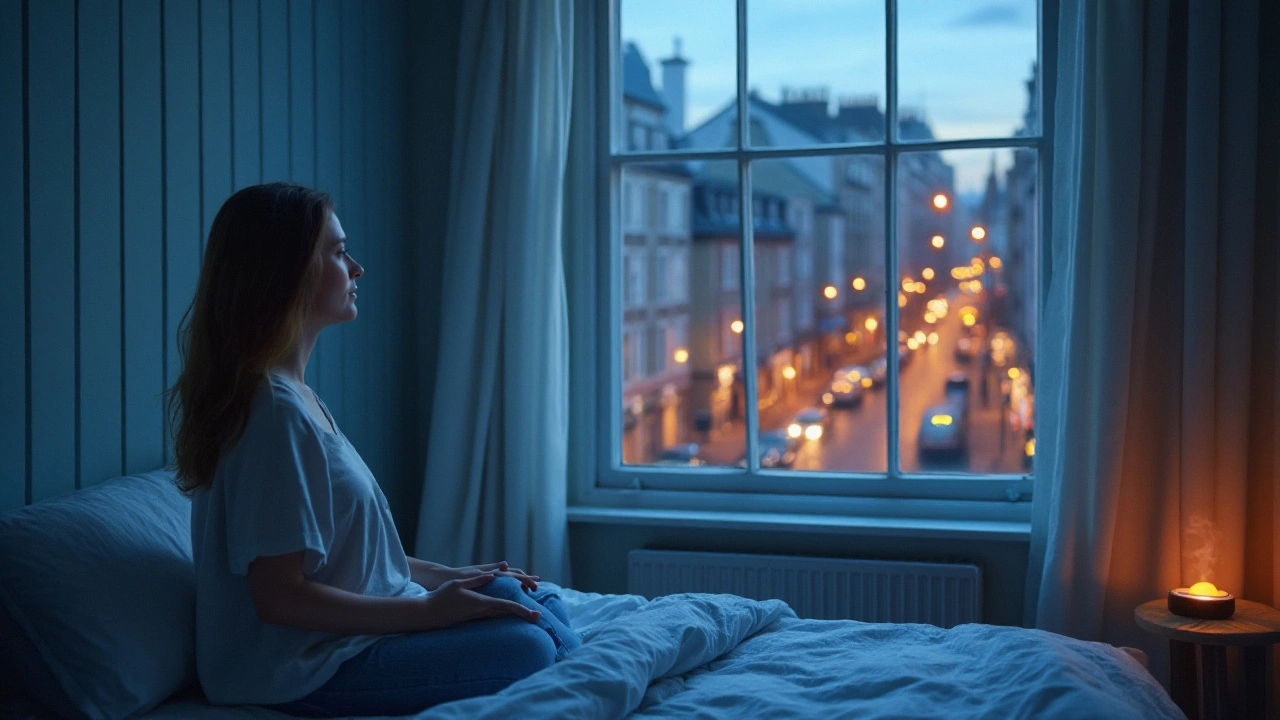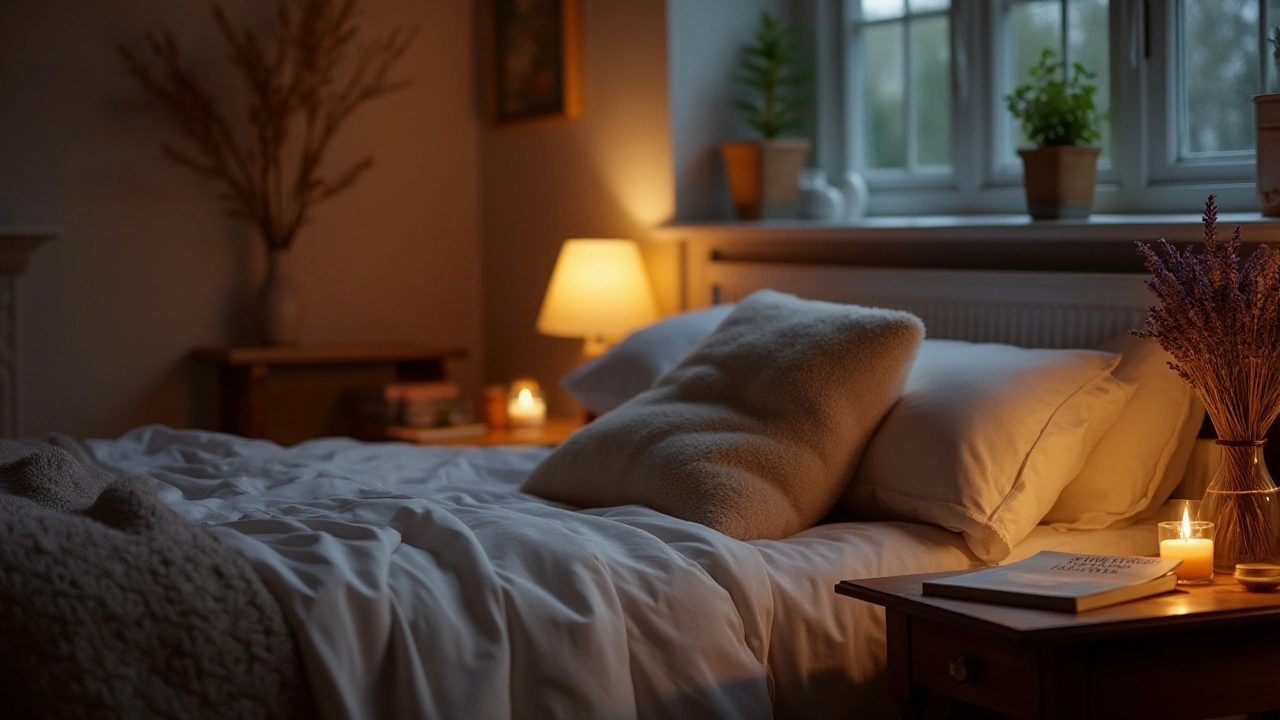In a world that's constantly in motion, sleep can often feel elusive, slipping through our fingers like sand. Yet, it remains one of the pillars of health, essential for our bodies and minds to function optimally. Enter relaxation techniques, a diverse array of practices designed to calm the storm within and invite a more serene state of being.
These methods, ranging from simple breathing exercises to immersive guided imagery, hold the promise of improving the quality and duration of sleep for many. By quieting the chatter in our minds and releasing tension from our bodies, relaxation techniques can transform the way we experience our nightly rest. Dive into the world of relaxation and discover how these methods can lead to more rejuvenating slumber.
- Understanding the Importance of Sleep
- Common Relaxation Techniques
- How Relaxation Affects Sleep Quality
- Incorporating Techniques into Daily Routine
Understanding the Importance of Sleep
Sleep isn't just a time when our bodies rest; it's a crucial phase where many essential processes take place. During a restful night, the body engages in healing and repair, strengthening the immune system, and consolidating memories. According to the National Sleep Foundation, adults need between seven to nine hours of sleep to function optimally. Yet, many struggle to meet this requirement, often putting themselves at risk for various health issues like obesity, diabetes, and cardiovascular disease. Without adequate sleep, our cognitive abilities can diminish, leading to poorer decision-making and decreased productivity. Thus, embracing healthy sleep habits is foundational for both mental and physical well-being.
Sleep is divided into different stages, including REM (Rapid Eye Movement) and non-REM sleep, each playing a unique role in our overall health. REM sleep is where the most vivid dreams occur and is believed to be crucial for emotional processing and stress relief. Meanwhile, non-REM sleep consists of three stages, the deepest of which facilitates physical recovery and muscle growth. A disruption in any of these stages can lead to feeling drowsy and unrefreshed, sometimes even exacerbating issues with mental health.
"Sleep is the best meditation," said the Dalai Lama, capturing the essence of how integral sleep is to tranquility and self-care.In this fast-paced world, recognizing and prioritizing the quality of sleep can make a significant difference in reducing the burden of stress and maintaining a balanced life.
Statistics show a worrying trend: a significant portion of the population reports difficulties in falling asleep and staying asleep. Stress, poor eating habits, and excessive screen time before bedtime are some common culprits that interfere with sleep cycles. According to a report by the Centers for Disease Control and Prevention (CDC), more than a third of Americans are not getting enough sleep on a regular basis. This sleep deprivation impacts every aspect of life, leading to decreased quality of life and reduced workplace efficiency. It's essential for individuals to understand the triggers that disrupt their sleep and then take proactive steps to combat these challenges. By engaging with effective relaxation techniques, many find a transformative approach to achieving better rest, ultimately nurturing both their mind and body.

Common Relaxation Techniques
When stress clings persistently or when sleep feels stubbornly out of reach, turning to relaxation techniques might just be the elixir needed. The true art of relaxation lies in the variety and adaptability of the methods available. Among the most accessible is deep breathing, where the focus is on inhaling slowly through the nose, filling up the lungs, and gradually exhaling through the mouth. This simple act can send signals to the brain to ease the tension. It lowers heart rates and can significantly reduce anxiety, a common sleep disruptor.
Another staple technique is progressive muscle relaxation. It involves deliberately tensing and then releasing different muscle groups in the body, usually starting from the toes and working upwards. The magic lies in its dual action – not only does it physically loosen tight knots but it also trains the mind to let go of held stresses. Similar in its calming properties is guided imagery. Here, the journey is largely mental, as it involves envisioning soothing scenes or environments. Whether picturing a serene beach or a tranquil forest path, this technique works by redirecting focus away from worries that might be clashing with the need for sleep.
Experts also often recommend mindfulness meditation as a vehicle for fostering healthier sleep habits. Though it might seem challenging at first, with practice, mindfulness invites us to sit with our thoughts without judgment or reaction. As our chattering mind settles, the pathways to restful sleep can become more apparent. Interesting results have emerged from studies, like the one conducted by Harvard, which found that mindfulness techniques improved sleep quality in 49% of participants, offering hope to those battling insomnia.
"Sleep is the best meditation," wisely stated the Dalai Lama, highlighting the invaluable connection between mind, body, and restful slumber.
When it comes to implementing these techniques, consistency is key. Listen to soft music or use apps that guide these practices. Start with short sessions and build from there, finding what resonates personally. It's crucial to craft a pre-sleep routine that feels like an invitation to rest. By diligently incorporating relaxation techniques, you may not only improve your night’s rest but also enhance your general well-being, leading to refreshed mornings and vibrant days.

How Relaxation Affects Sleep Quality
Tucked within the tapestry of our daily lives is the subtle yet powerful influence of relaxation techniques on our sleep quality. At the core of this relationship is the mind-body connection, a symphony of neural and physiological processes that govern our capacity to soothe into restful slumber. By consciously engaging in practices that reduce stress and promote a tranquil state of mind, we set the stage for a more restorative sleep experience.
When relaxation techniques are employed, such as deep breathing or progressive muscle relaxation, they serve to activate the parasympathetic nervous system. This system is often called the "rest and digest" response, as it counters the "fight or flight" mechanism triggered during stressful times. It plays a crucial role in decreasing heart rate, lowering blood pressure, and calming the body, crafting an ideal environment for sleep. As stress hormones like cortisol dip, the production of melatonin—a hormone central to sleep regulation—increases, facilitating a smoother transition to sleep.
Stress and anxiety often lead to a vicious cycle of sleep disturbances that affect our daily functioning. An overstimulated mind struggles to wind down, deterring us from achieving deep, high-quality sleep. Through relaxation practices, individuals can break this cycle, easing night-time rumination and fostering mental and emotional clarity. Dr. Herbert Benson, a pioneer in mind-body medicine, once said in his extensive research on the subject,
“The relaxation response is the opposite of the stress response. It is a physical state of deep rest that changes the physical and emotional responses to stress.”This underscores the importance of harnessing these practices to transform our sleep habits.
The impact of healthy sleep extends beyond just feeling refreshed in the morning; it influences every aspect of wellbeing, from mood and cognitive performance to immunity and metabolism. It's notable that studies have documented how just a few weeks of integrating these techniques can lead to improvement in sleep latency, duration, and overall satisfaction. In highlighting these facts, it becomes clear how valuable these strategies can be in repairing and enhancing our sleep cycle. Whether using guided imagery to create a relaxing mental picture or listening to soothing sounds, the positive implications on sleep are vast.
Understanding the subtleties of these techniques and their application allows people to harness their benefits fully. By choosing consistent practices tailored to individual preferences and routines, the full potential of better rest and rejuvenation becomes achievable. Sleep experts often advocate starting with small, manageable changes, perhaps introducing a 5-minute breathing exercise before bed, and gradually increasing as comfort and results manifest. In a landscape where sleep is often undervalued, dedicating time and attention to relaxation techniques provides a promising pathway to unlocking the ultimate sleep quality. By listening to our bodies and minds, we learn how pivotal these techniques are in crafting the perfect night's sleep.

Incorporating Techniques into Daily Routine
Embracing relaxation techniques in your everyday life doesn't require a complete overhaul of your schedule. Instead, it's about weaving these practices seamlessly into your existing routine, creating a sanctuary for rest within the chaos. Begin by identifying your personal stress triggers. These might be looming work deadlines, the constant companion of notifications that ping throughout the day, or the complex weave of family responsibilities. Once you recognize these stressors, it becomes easier to integrate techniques that specifically address your needs.
Let's take, for instance, deep breathing exercises. This exercise can be carried out discreetly almost anywhere: at your desk, in the car, or during a quick break. The idea is to close your eyes for a moment, inhale deeply and let the air reach your abdomen, hold it, and then release slowly. This simple act can help lower the heart rate and calm nervous energy, making it a perfect technique to schedule multiple times throughout the day. As a neuroscientist mentions, "Breathing is remarkable. It's one of the few physiological functions we can control and utilize to quell the fight-or-flight response."
For those who battle an overactive mind when bedtime rolls around, guided imagery or mindfulness meditation can be especially beneficial. Set aside time before bed to immerse yourself in a calming mental scene. Envision each detail vividly—whether that's a serene beach, a quiet forest, or any place that invokes peace. As a practice, this can be paired with progressive muscle relaxation, which involves tensing and then slowly releasing each muscle group. This not only eases physical tension but also trains the mind to associate this relaxation period with sleep readiness.
Creating a dedicated relaxation space at home can serve as a helpful reminder of the importance of daily unwinding. Consider this space your haven—free from digital distractions, bathed in soft lighting, perhaps accompanied by soothing scents or sounds. Retreating to this space, even if just briefly, can signal your mind and body to decelerate. Similarly, engage in rituals that conclude your day on a restful note. Whether it’s sipping a warm cup of herbal tea, reading a chapter of an inspiring book, or jotting down your thoughts in a journal, these acts can create a buffer between the stresses of the day and the respite of night.
A consistent commitment to healthy sleep habits amplifies the benefits of these techniques. Align your relaxation practices with a regular sleep schedule, aiming to retire and rise at the same time each day. This regularity strengthens your circadian rhythm, further enhancing your ability to fall and stay asleep. Remember, cultivating a routine rich with relaxation is not just about carving out time for these activities; it's about nurturing a lifestyle where these moments become as second nature as breathing itself. It's about learning to pause, to breathe in peace, and to release stress, one day at a time.
